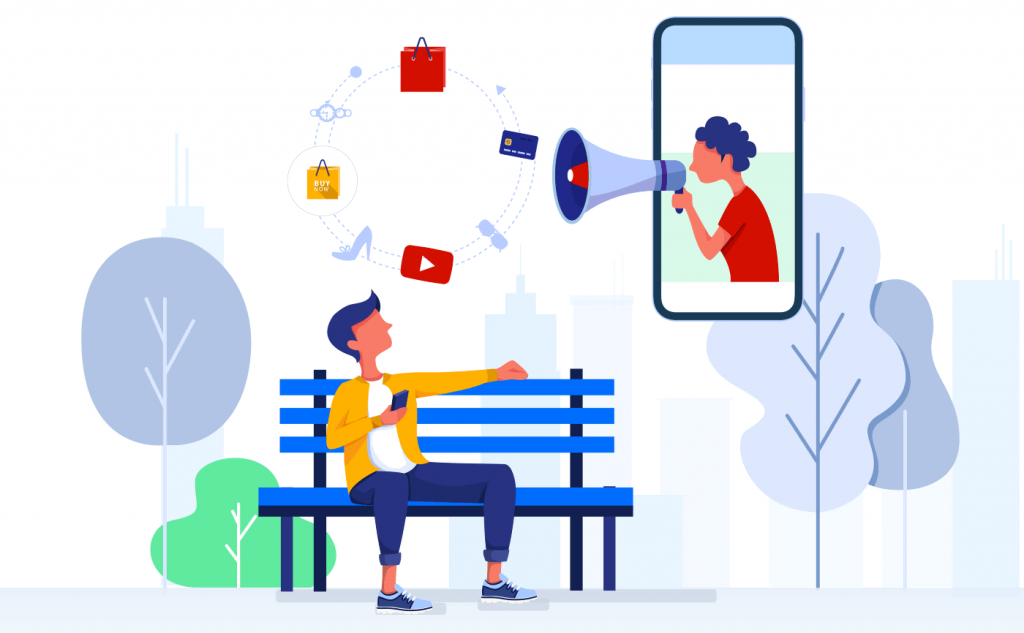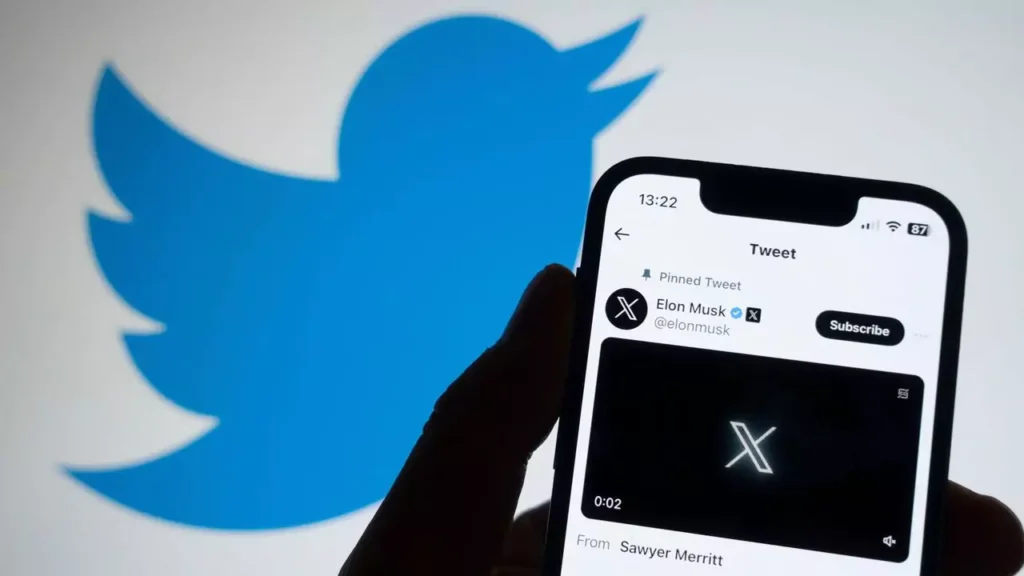Transforming Your Digital Identity with Cohesive Branding
Have you ever wondered why educational institutions usually have a book symbol on their logo, as well as a quote from a famous author on their logo? At the same time, sports clubs typically have a ball used in their respective sport, a quote from a sports legend (or even the G.O.A.T.).
Is this necessary, or, to be completely blunt, is there a point to all of this?
The main reason why this is done is – cohesive branding. Everything about your brand needs to send the same message.
From the moment you hear about a fast food restaurant, you need to know that it's a fast food restaurant without even looking it up or visiting it. Its name must match the cuisine it specialises in, and its central theme must use a colour that stimulates your appetite. Everything about it needs to scream that it's a restaurant.
Still, how do you do this in a digital world?
To create this kind of cohesive brand in a digital world, you first need to understand the concept of digital identity. This is about much more than just creating a logo, picking a colour, and choosing a quote for a slogan. It will affect your entire marketing strategy and the outcome of your entire marketing campaign.
Here's a complete guide on handling the art of cohesive branding.
Table of Contents
Understanding your business

Before you start with branding, you need to understand your own business. You see, a brand is an idea that pops into the minds of your customers when they hear about your business. This idea is not random or arbitrary for each customer to figure out independently. You need to focus on the exact image you're trying to push and then grind toward making this a reality.
Start with the basics.
The first thing you need to understand is your business model. Are you a SaaS business selling digital products or shipping digital products? Are you a sole proprietorship, an L.L.C., an L.L.P., or a different structure (available in your respective region)?
While this may sound trivial, the truth is that it will change your brand story and even the way you approach different marketing tasks. For instance, SaaS SEO marketing is much more than conventional retail SEO. This is partially because one of your goals in the SaaS field is to reduce the churn rate. Therefore, a disproportionally large amount of your SEO activity is not aimed at new customers but at your existing client base.
Figuring out your main product and demographic is essential for choosing your primary platforms. For instance, when specialising in materials for home crafts, it's more than clear that Pinterest and Instagram are more suitable than LinkedIn for pushing your message. Of course, you must be present on all these platforms, but let's not pretend it's the same where you post.
In other words, for the sake of cohesive branding, you need to push the same message (just different in format) through all the channels, but this doesn't mean all the channels are the same.
Setting your core values, vision, and mission
Your customers care about your core values more than you think. This is especially true for younger millennials and Gen Zers, and it's especially true in 2024. According to the current cultural zeitgeist, this trend will continue going strong.
So, saying that you're in it for the money may sound honest, but it's not enough. You must clearly state and broadcast your core values to the world.
- What kind of business do you intend to run?
- How do you want your employees to feel about you?
- Are there some lines that you won't cross?
- What would you go out of your way to do (even if it hurts your profit)?
This can envelop everything from product development to customer service.
Next, you need to make a mission statement. The way to do this is pretty simple – you put yourself in the position of someone who sees their job as a vocation, not just a money-making activity. Like a doctor who's in it to save lives or a teacher who wants to spread knowledge. Are they in it for the money as well? Sure, but this is not their only motivation (even when it's the strongest), and it's not something they boast about when trying to impress a company.
This naturally feeds into your vision statement. Imagine you caught a genie in the bottle and had a chance to make a wish regarding your business. Well, this is what writing a vision statement should be like. This is important for branding and may also help set your long-term strategy.
Setting brand personality
While every business is a person in the eyes of the law (and an I.R.S.), your customers often have difficulty seeing that brand as more than just a business. Sure, you could see your team as a family, a group of talented individuals, each working toward common goals and objectives while simultaneously having goals and objectives of their own. You need to help your audience see this, as well.
Does your audience want to see this? Do they even care about this stuff? Of course they do!
What do you think about why they enjoy it so much when major brands (we're talking about multi-billion-dollar corporations) post memes and bicker with each other on social media? Look at Wendy's social media strategy, and you'll understand it all.
We're talking about a business worth billions, with approximately 15 thousand employees. If anyone would have been accused of being just another corporate cash grab, it would have been them. Still, with just a few memes and a talented social media manager who impersonates that they indeed are Wendy's brand personified, everything is different.
So, you need to help your brand choose its personality.
The best part about doing this in a digital world is that the customer can't see who's on the other side of the screen. Even if there is more than one social media manager (which is undoubtedly the case with Wendy's), everything should work out as long as they all understand their assignments and stick to the guidelines.
Appealing to all the senses

We've mentioned the logo several times already. While this is logical, it makes a false sense that all there is about brand identity is its visual identity.
Is the logo the most recognisable feature of most products and brands? Yes! Will we start this chapter by diving into the importance of visual identity? Absolutely! However, this doesn't mean that this is the only thing you must do to craft a solid visual identity.
Remember that appealing to all the senses makes the most sense (pun intended).
When choosing who to buy from and who to do business with, people will weigh in even the factors they're unaware they registered.
To some, this might sound a bit intimidating, but the truth is that it's an opportunity for you to get a competitive edge over those who are taking the lazy way out and approaching this issue from just one angle.
Strong visual identity
The first thing you must do when creating a solid brand is set up a decent digital identity.
People will notice your brand long before they start researching it. In other words, the first thing they see is the visuals. Not only that but there are some theories suggesting that humans register visual information 60,000 faster than verbal. They say a picture is worth a thousand words for a reason, so why not use this concept to your advantage?
You must also understand the difference between brand recognition and brand awareness. These are the two stages of familiarity a potential customer has with your brand. First, they recognise your brand when they encounter its logo or a product somewhere on the shelf (or an online ad). Next, they know a thing or two about your enterprise.
Sure, the latter is more in your favour, but you can't skip recognition and go straight to awareness; it just doesn't work that way.
Well, your visual identity is directly responsible for brand recognition. Let's face it: most people recognise products by their logos or product packages, both of which are a part of their visual identity. In other words, this comes first.
Not to mention that a visual identity affects many other aspects of your business model. A luxury-looking product can be sold for more, while a budget product needs to look the part not to look fake. The customer must look at it and think, “Yeah, that looks about right.”
All of this requires more strategy than you think.
Using psychological phenomena to your advantage
Nothing is random in marketing. There's a reason for using every negative word (usually to trigger a F.O.M.O. response from you) and every positive word (usually a C.T.A.) used.
The truth is that while our senses are supposed to be “objective,” there's no such thing. Our expectations greatly determine the way we perceive the world. For instance, putting your hand into a bag without looking and touching something warm/cold could trigger a positive or a negative response, depending on what you expect to find in the bag. In other words, your expectations affect your response to the same object with the same physical characteristics.
Some of these phenomena are:
- Impulse buying: The concept of getting something in the spur of the moment, without an elaborate product analysis.
- Halo effect: A favour you win on one end transfers to most other fields where you work. When Apple started its streaming service, it immediately benefited from brand recognition, prestige, and reputation, even though the new product had nothing to do with the old one.
- Mere exposure effect: When you hear about something for a longer time, you become more familiar with it, regardless of whether you've registered for it. This is why internet banners are such an effective promotion tool.
- Bandwagon effect: This is a positive spin on the F.O.M.O. The simplest way to explain it would be to say, “I want to do it because everyone's doing it.”
Figuring out how to incorporate these phenomena into your broader strategy should be a top priority. Most importantly, there are many more (too many to fit any list). Reading into consumer psychology should be a must for every marketer.
Appealing to their tactile sense
This part can sound strange; after all, how can you transfer a tactile sense through the keyboard? Still, bear with us; there's a method to this madness.
People with phantom limbs can feel an itch even on the part of the body that's long since gone. Our mind's power of suggesting is not to be underestimated.
For instance, have you ever seen a product design or a package and instantly thought it looked cheap or high quality? Whether you realise it or not, you're probably doing this all the time.
Still, how do you transfer this to the digital identity?
First of all, there are a few ways to do so. The first one is the use of a descriptive language. Have you ever read a description in a book where you felt like you could smell the battlefield, see the room, or taste the wine on your tongue? Well, this is the power of suggesting writing, and with a talented author on your side, it shouldn't be too difficult to achieve.
You also want to use high-quality imagery. Make sure to take photos in a decent resolution, but remember that loading speed is often more important than visual fidelity in a digital world. This is why you need to learn how to optimise your images correctly. Find the right tools that will allow you to keep the quality of the original image (at least not lose too much of it) while keeping it compact and optimised for web and mobile.
Picking the right digital platforms

When it comes to digital marketing, it's not just about the message that you're sending or the voice that you're using. The right channel matters just as much. So, one of the first steps in realising your strategy needs to be picking the right digital platforms. Here are the three major areas that you should focus on.
Start with a website.
All the roads lead back to your website.
Before you can give that person that you like your phone number, you must first own a phone. Before you can give someone your address, you must instead have a home. If you plan to use SEO to position yourself better, well, you need something to position.
Previously, we've mentioned the importance of “looking the part.” People evaluate you long before they do business with you, and by the point they've checked for themselves and know these things first-hand, your reputation is merely a rumour.
When they first hear of your business, the impulse for most people is to look you up. They probably won't do business with you if they can't find your site (due to a poor search engine rank and non-existent SEO) or dislike it (due to poor optimisation and bad design).
From the previous paragraph, it's more than clear what your immediate two objectives are – hiring someone to create an outstanding website and ensuring it ranks well.
There are, however, a few problems here. Making a decent website takes time, experience, and much work. With so many drag-and-drop website builders, you can do it on your own and on a budget, but hiring a professional is still worth it.
SEO will take time, money, and patience regarding ranking. You need a decent marketing budget and supplementary methods (like a P.P.C. campaign applied simultaneously with your SEO efforts) to boost your head.
Create a blog
The next thing you must understand is the importance of a blog.
Why does a blog matter?
First, this is a great way to develop a natural rapport with your audience. Here, you're organically engaging with them, even offering something of value. Content that's informative, entertaining, or educational provides value for free. It's a token of goodwill that can become the foundation of a great future relationship.
In the previous section, we've talked about the importance of SEO. With a blog, you get a massive boost to your off-site SEO through internal linking and backlink opportunities.
It's also important to mention that blog content is a great way to demonstrate your brand personality. We've already talked about setting the same tone when addressing your audience, and in a blog post, you have far more space than in a social media post. This means you have a more organic opportunity to make that brand personality visible to everyone.
Blog posts are also fantastic for demonstrating your knowledge and industry authority. In the medical field, for instance, you can create a loop where you present your expertise through the post and use your credentials to make it appear even more authoritative. Still, this is not exclusive to the medical field.
These posts are also great for social media marketing since they give you your content to share and promote.
Most importantly, a blog allows your audience to develop a habit of interacting with you. If they read your posts regularly, you already have a reputation.
Engage with social media.

More importantly, there's a reason why we used the phrase “engage with” instead of just going with a generic “post” or “promote.” The thing is that this is an opportunity for your brand to get genuinely humanised.
Same as in the eyes of the I.R.S., your brand is just a profile on social media. It has a voice, preferences, and everything else individual profiles have.
For instance, according to your shared content, you can show your stances on various societal issues on social media.
Whenever you see a celebrity and go to their X (formerly known as Twitter), all it takes is a bit of scrolling to figure out exactly where they stand on almost all the major societal issues. The best part is that you get that dopamine hit because you deduced it on your own (through independent research) instead of being served the answer.
You can use this to profile your brand and paint it in the light that you intend.
Posts are not the only way you engage with others on social media. Comments and even chats are equally as important. This is an opportunity to show that your brand is just a face for all the incredible people working in your organisation.
A positive interaction will transform even a hater into a fan. Responding to criticism, praising others for their fantastic content, and engaging in a good-faith debate can do wonders for how your audience sees your brand.
You can show everyone you're a bigger person, take constructive criticism, and even have a sense of humour.
Grow your Digital Identity
The last ingredient that you need to be aware of is – consistency. Your business evolves, but you should never deviate from your core values, vision, and mission. Sure, brands evolve with time, but if you pick the right personality, you can have it stick around for a while.
Visuals also evolve but usually stick to the same basic concept. The Pepsi logo doesn't look the same as all those years ago, but you can still tell it's the same brand. This is one of the main reasons why a logo redesign is a sensitive task best left to professionals.
Lastly, choose your platforms wisely, and while you want to adjust for the format, stick to the same basic principles.
All these will help make your digital identity far more reliable and cohesive for years.
